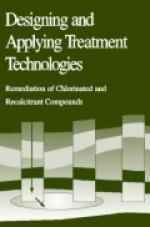Tab Article
Remediation practitioners and site managers often face complex environmental contamination challenges that prove to be either resistant to conventional remediation approaches or too costly to treat by such methods. Fortunately, new technologies are waiting in the wings, and sometimes a combination of existing and/or emerging technologies might prove to be the most cost-effective solution. Designing and Applying Treatment Technologies: Remediation of Chlorinated and Recalcitrant Compounds combines technical guidance on some of the newer remediation technologies with case studies on remediation strategies that have worked effectively at real-world sites. Chapters cover bench-scale testing, modeling and performance evaluation for permeable barriers, barrier design and construction, remediation of explosives and nitroaromatics, remediation of pesticides and herbicides, regulation and remediation of PCBs/dioxins, emerging technologies, and applying multiple remediation technologies.


